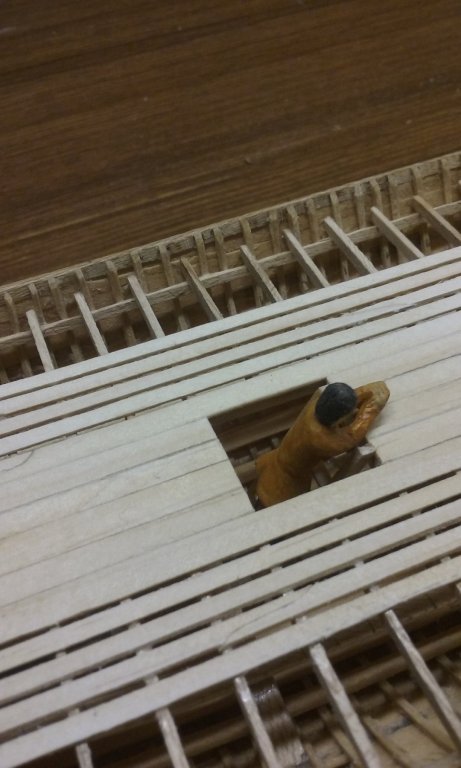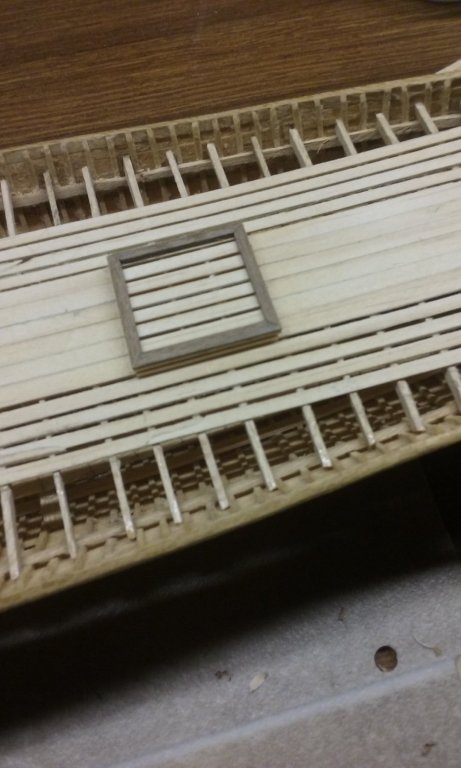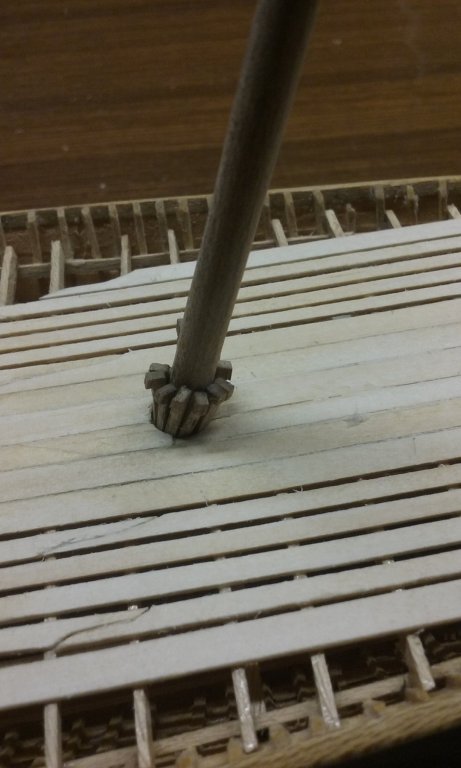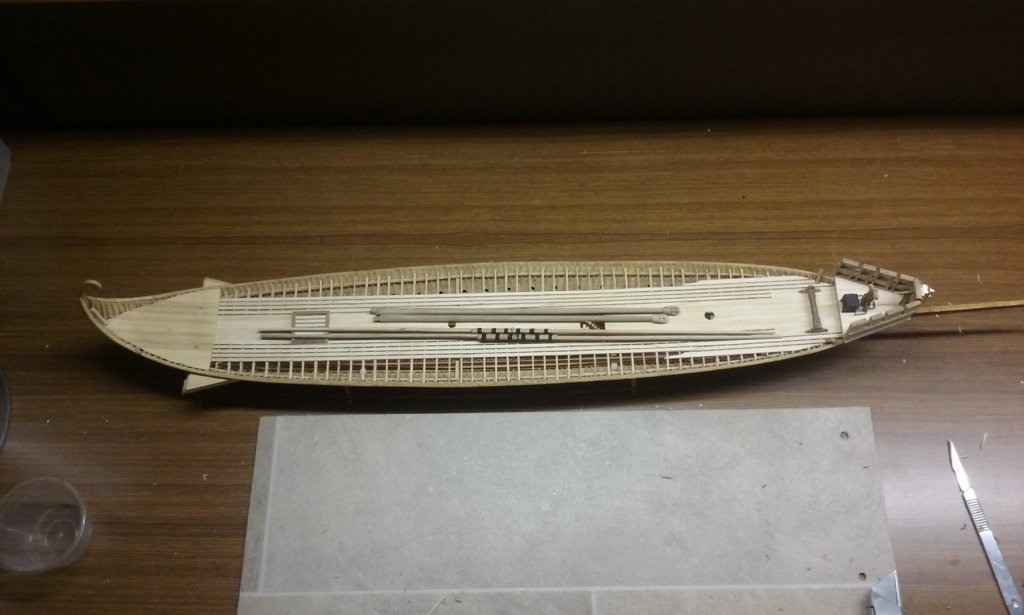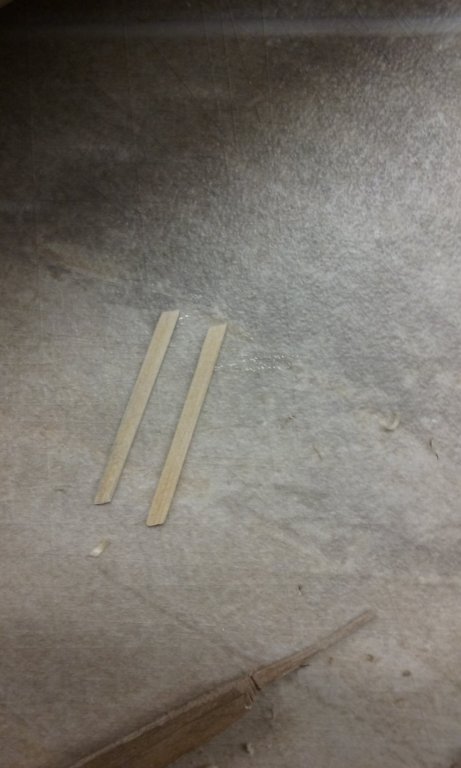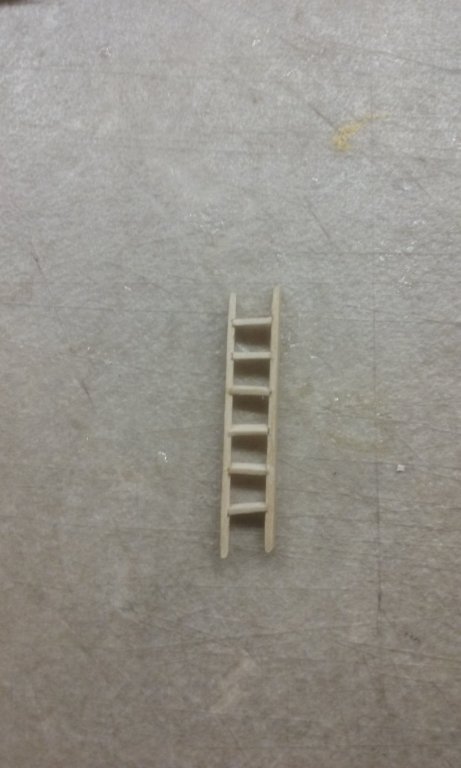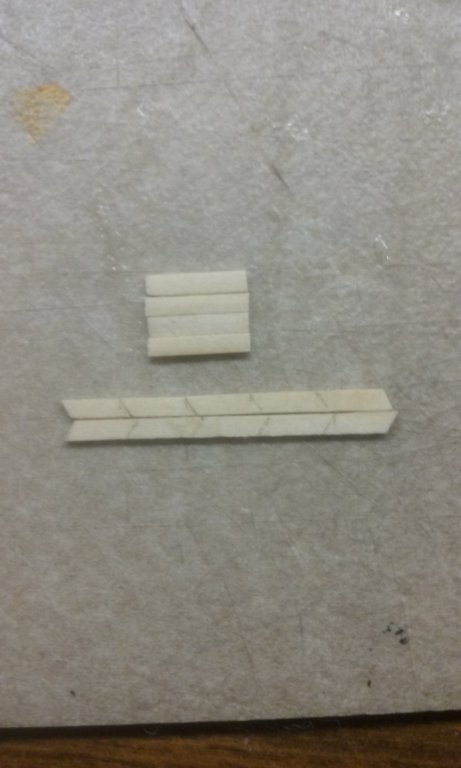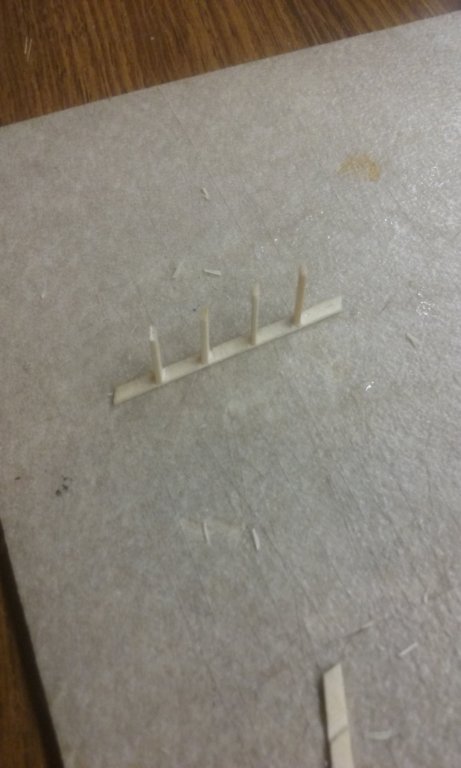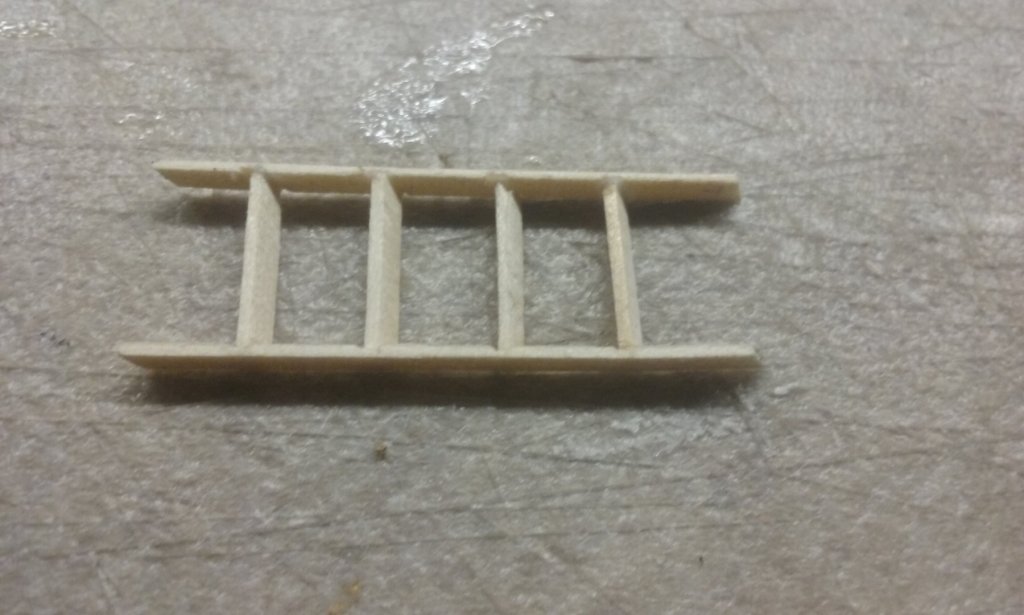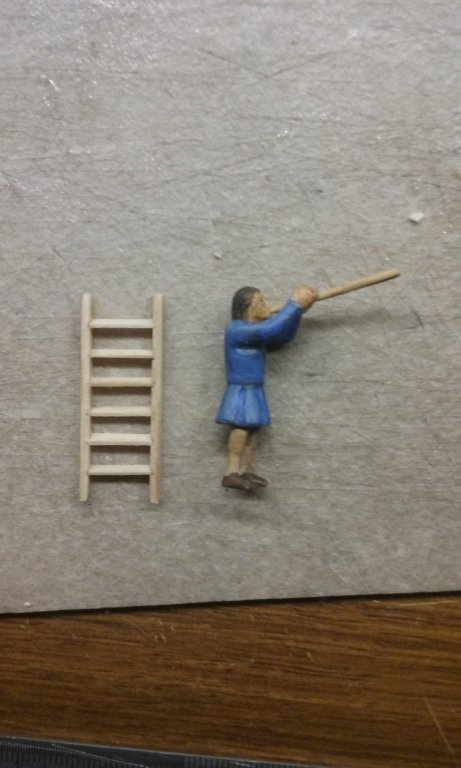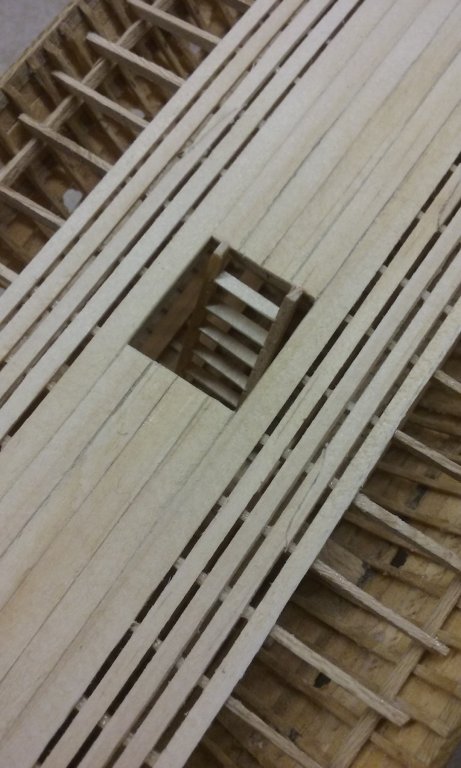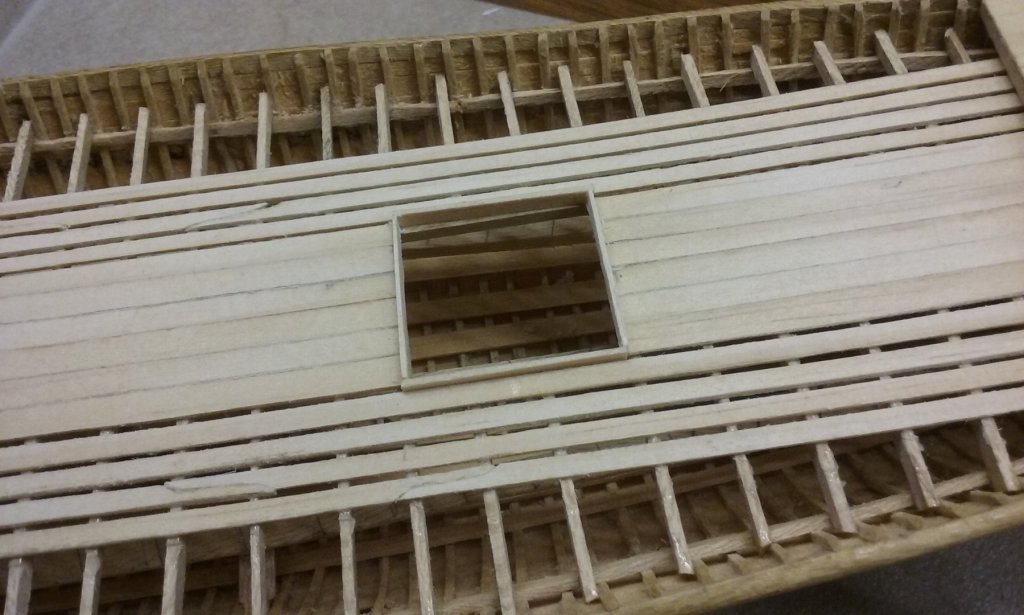-
Posts
7,989 -
Joined
-
Last visited
Content Type
Profiles
Forums
Gallery
Events
Everything posted by Louie da fly
-

Clotilda, last US slave ship, found
Louie da fly replied to bruce d's topic in Nautical/Naval History
Yes, the slave trade was outlawed in Europe and America many years before it was finally wiped out, and a fast ship was vital. Unfortunately it appears that slavery is even more widespread today than it ever was. Steven -
Just been trying out a bit of painting - for the awning at the poop and the Imperial flag. These are just test pieces which I did to see if the technique worked, without checking against the original sources, so the details aren't correct. The awning is based on this: And the flag is based on these: I'd already painted the fabric purple, so we start with the roughed-out eagle. The foil is from the wrapping of an Easter egg - I got the idea from someone's build on this forum, and I think it should reproduce the flapping of a flag nicely. First coat of paint: and second: The awning worked fine, but the acrylic paint just doesn't work on the foil, so I'll need to get some enamel paint for that. Steven
-
No worries, Carl. Understandable. Dick could certainly be right. I've already disregarded the Angevin galley's measurements for the mast and the yards because they just didn't seem right to me (the relationship between masts and yards meant that to avoid the forward end of the yard hitting the deck, either the yard had to be on a very low angle or it had to be fixed to the mast very close to its forward end. Neither of those looked right and I ended up going with my gut feeling). So if those dimensions are suspect, why not the length of the spur? The specification Prof Pryor quotes is "sperones duos galee de robore bonos pulcros et sannos, longos gode XIIII pro quolibet et largos palmum unum ..." which I think means "two spurs provided of good strength, beautiful and (healthy?), each 14 long and one palm thick". So how long is a "palm"? In other fields I've seen - such as http://www.levantia.com.au/pdf/Dawson_Fit_for_the_Task.pdf - the values of dimensional units have been found to vary over time and between regions - just as the Dutch "foot" in the 17th century wasn't 12 inches. However I've made my decision and glued the spur in place, so I'm sticking with it. And yes, it used to look like a bread basket. But I think I can flatter myself that it looks like a ship now - and in my humble opinion, a rather beautiful one. Dick's using the word "horns" to describe what I've previously called "wings" - the upward extensions at the stern of many galleys of the period - see post #807). The crutches (let's call them that for clarity), have to be that high so the crew can get underneath the masts and yards. Check out the first picture from Age of the Dromon in my post #802 - you can see the masts/yards as a horizontal bar quite a distance above the deck. And a ship on the Column of Trajan has a similar feature. Even then they could perhaps interfere with the foot of the sail when the ship is under way - it's all a compromise between conflicting requirements (as usual when designing something complex). Steven
-
Carl, Dick was talking about the length of the spur, which is the thing sticking out from the bow that took the place of the ancient ram. He and I agree to disagree about how long it should be. Contemporary pictures show it shorter than I've made mine - sometimes it is shown ridiculously short and could never perform the function it was intended for - but in a contemporary specification for spurs intended for Angevin galleys (late 13th century) the required length is given. As a dromon was about 3/4 the length of an Angevin galley, Prof Pryor theorised that its spur would be 3/4 the length of that, and that's the length I've used. Could be wrong, but we'll never know. Steven
-
Thanks, Dick. Yes, I understand about the spur, and I had to make a decision at some point whether to trust the pictures or the documentary evidence. I came down on the side of the documents because it's easier to faff around with a drawing than with written numbers - though I admit I'm not totally consistent in this! The first picture is certainly of a two-banked vessel so is a dromon in form, but as it's from Genoa it would probably be called a galea. The others might be two-banked - it's hard to be sure - if not, perhaps they are galeae with oars arranged in one bank with two oars per bench (alla sensile), which seemed to have made dromons obsolete due to their better power-to-weight ratio. Oh, and look! They have a bar between the "horns" - so (in relation to my comments in your Venetian round ship build log) perhaps the horns were to support the yards after all! Now, an OOPS! I didn't take into account the inclination of the foremast when I put in the forrard crutch, and it turned out the mast interfered with the crutch. Just impossible. So I had to remove the crutch (fortunately, that was pretty easy), cut a new hole for it in the deck and glue it in place and close up the old hole in the deck. I'll probably have to use a bit of home-made filler to smooth it all off. (Sigh). Steven
-
Thanks everybody for the likes and particularly the comments. It makes the hard work worthwhile - well, the work itself is worthwhile otherwise I wouldn't be doing it- but it's very nice to get the feedback from my fellow modellers, whose opinions are very valuable to me. Christos; normally yes, but apparently the word has changed over the centuries; the Anonymous has 'Ιστοδοκη, (and so does the Iliad, according to Age of the Dromon)-so Pryor has the plural as 'Ιστοδοκαί and I think in this case that must be right. Steven
-
I take it you mean in a ship built without horns, such as your own? Interesting question. My dromon has permanent crutches, but I can't think of any Mediterranean round ships of the right period that show anything that could be an answer to that question. I just had a look through my images to see if anything came up, and . . . nothing. But one thing that seems to come up every time is that when ships with horns are shown in 3/4 view (fairly rare, admittedly) there isn't any sort of cross-bar shown between them. So how could they support the yard anyway? The only thing that might help is the pictures below, which show a sort of squared-off framework just forrard of the horns. Perhaps this is the crutch? But to my knowledge it appears in only these two pictures and not in several others which show 3/4 views of ships without horns. So, not really all that much help, I'm afraid. [Edit:] However, it's occurred to me that unlike a galley, a round ship is only likely to take its yards down when it's in port - the sails are its only motive power. So perhaps just a pair of sheers at each end of the hull would be all they'd use. Why have a permanent structure that wasn't used when the ship was at sea? Just a thought.[/Edit] Steven
- 263 replies
-
- nave tonda
- round ship
-
(and 2 more)
Tagged with:
-
Another step forward. I've made the kathormeis (the crutches to take the yards when lowered) and the histodokai (crutches for the masts). After considerable agonising, I've decided to make them almost identical. The kathormeis are slightly narrower than the histodokai because they only have to support the ends of the yards, while the histodokai support both the masts and the thickest part of the yards, where they consist of two spars lashed together. Unfortunately, there are no contemporary pictures of these - the closest ones are from maybe 700 years too early - a mosiac in baths of Themetra in Tunisia, c. 220 AD, and a mast crutch from a sepulchre in the same region from the third century AD, which seems to have a mast on a pivot. (both illustrations from Age of the Dromon). Lacking anything better to rely on, I've used the second picture as a rough basis for my own. Checking back in Age of the Dromon (which I guess I should have done before making them) I find that there should possibly have been three kathormeis and an indeterminate number (perhaps one) histodoke according to the only (not very reliable) source, known as the Anonymous, from the time. However, I've gone with two of each, and since they're now glued in place I'm not going to change them. And Prof Pryor poses the question The Anonymous clearly differentiated the crutches for yards from the histodokai but whether there was in fact any difference between them is unknown. Why could not one set of crutches have been used for both purposes? In a discussion relating to the Anonymous' statement that the histodokai are fixed to the keel Prof Pryor is of the opinion that Even if sheer logic did not demand it, the pictorial evidence suggests that both histodokai and yard crutches were set up on the deck, not the keel . . . but that Whatever the case, neither histodokai nor kathormeis could have been fixed on the keel unless their posts were made to pass up through the decks as the masts were. That might possibly have been done for reasons of structural integrity since the weight of the masts and yards which they had to carry was very considerable. This is how I see it as well; the histodokai would have been supported on the keel - if they were fixed only to the deck, the uneven turning forces as the ship rocked would have put far too much shearing force on the fixings, with the result that the histodokai would be very likely to rip their fixings out of the deck and fall over, taking masts and yard s with them. Unfortunately I didn't think of this early enough, so I've had to fix them into the deck after all. But as the deck would have hidden the part below decks anyway, it doesn't really make any difference to the finished model. I had originally made a couple of them out of plane wood, but it looked too pale and boring, especially since the windlass, masts and wedges were made of darker pear wood. So I made new ones out of pear. Here are the (pearwood) histodokai and kathormeis as built. I forgot to take a photo of them before they were assembled. Here is the ship with them attached. And with the masts and yards in place. The yards would naturally go on first, followed by the masts. I had to balance the need for headroom underneath against the interference of the crutches with the foot of the sails if they were too high. As it is, the crew will have to duck a bit to get under them - which could lead to lots of entertainment for the rough sailors if people didn't look where they were going. Sorry about the fuzziness in some of the photos - mobile phone and not enough light. However, I think it looks pretty good. It's all starting to take shape. Steven.
-
As a further confirmation of Dick's rudder construction, here's a picture from the Annals of Genoa from 1173-1196 - over a hundred years earlier than the Contarina ship, but with a very similar rudder arrangement. The picture appears to have had the bow cut off, but it's actually the artist's fault - he seems to have run out of room at the edge of the page. The whole of the Annals, which also contain pictures of another two round ships and 10 galleys, are to be found at https://gallica.bnf.fr/ark:/12148/btv1b9076701x/f203.item - but only in black and white. An interesting detail is that the rudder is outside the "wings", which seems impractical and may also be artist error. There are also issues with how the "wings" relate to the transom at the stern - doesn't look right. The pictures appeared in Bjorn Landstro"m's book The Ship, but without attribution. I've always wondered where they came from. Steven
- 263 replies
-
- nave tonda
- round ship
-
(and 2 more)
Tagged with:
-
There's also the issue of available technology. Was cast iron feasible in the 18th century? Could they get iron hot enough to flow into a mould at that time ? Nup - just checked. Cast iron was available in Western Europe from the 15th century onward. I should have realised, actually. Iron cannon were cast . . . Steven
-
Well, most of the upper works (pretty much anything above the waterline) is usually gone in most cases anyway - depending on the angle the ship came to rest on the sea floor. The Red Bay wreck and one in Scandinavia (and of course the Black Sea wrecks) are exceptions where most of the ship has survived. But the Yenikapi wrecks in Istanbul, for example, almost all have the upper works completely gone, and none have their decks surviving. So the chances of finding a hatch cover are going to be pretty slim. Steven
-
It would be interesting to check whether or not the idea of gratings being connected with gunpowder smoke is true, but it would require archaeological and/or pictorial evidence of before and after the introduction of guns mounted below the upper deck. And I think that would be a bit hard to find. Most if not all mediaeval wrecks are missing their upper decks, and the only contemporary picture I can think of off-hand that shows a ship's hatch before the cut-off period is the careened carrack in Botticelli's "Judgment of Paris", which unfortunately shows the hatches without covers. Steven
-
Yes, I thought that might be a problem - access past the handles if they're running from side to side of the ship. The guns won't be a problem, though. They haven't been invented yet 😁. But if anyone else has further advice on this issue I'd be very grateful. I'm pretty much in the dark on this but I don't want to make a stupid mistake with it that I later regret. Steven
- 12 replies
-
- chain pumps
- dromons
-
(and 2 more)
Tagged with:
-
Nice work, Dick. Looking very good. Steven
- 263 replies
-
- nave tonda
- round ship
-
(and 2 more)
Tagged with:
-
Thanks, Dick. I'll try that. Makes a lot of sense. Steven 😁 By the way, I liked your hatches. Solid ones, because they didn't have to disperse cannon smoke (which is from what I've read, the reason for gratings in later hatch covers).
-
The galleon quite nicely finished but not terribly historically accurate (for example, it has almost no rigging, and the sails on the foremast and the mizzen (rear) mast are wrong. Galleons didn't have any triangular sails except a single one on the mizzen mast, and that was a lateen sail with an angled spar at the top - the foremast carried square sails only, and the mizzen carried none). Having said that, it's an attractive model. The yacht is pretty simple and I can't really comment on it because I don't know enough about them. If you want to keep them for sentimental reasons, go right ahead; otherwise perhaps you could find someone to give them to. It would be a shame to put the galleon, in particular, in the fire.If you're only interested in these ships from the point of view of selling them, I don't think either of them would be worth a large amount of money. Steven
-
Welcome to this fascinating and rewarding hobby, Joel, and to this forum which is full of friendly and helpful people, at all stages of experience and expertise (including plenty of beginners). I agree with the posts above - if you don't have pre-cut pieces such as frames etc, I think you can validly call it a scratch build. Do you have a particular ship in mind? Oh, and when you start making the ship, make sure you start a build log. You can get a lot of help (and encouragement) from the other members of the forum. Steven
-
So as far as I can see, the wheels of the chain pump are at right angles to the keel? I can see that having them that way makes it easier for the water to reach the lands and then run to the scuppers. But are there any cases of chain pump wheels parallel to the keel? Or is it a matter of choice from ship to ship? I'm getting the the point where I'm about to make my chain pump housings. I'd like to have my wheels parallel to the keel, but I don't want to get it wrong. Steven
- 12 replies
-
- chain pumps
- dromons
-
(and 2 more)
Tagged with:
-
Thanks for all the likes, people. And Patrick and Carl for the comments. A little more. I went ahead with the perimeter battens for the hatch cover.I think it looks better, particularly with the contrasting wood colour. And someone climbing up the ladder from below decks (just for the moment- he has other duties when the ship is complete). The mediaeval Byzantine sources mention supporting stands for the yards and for the masts when they're lowered - two different structures with two different names. I couldn't figure out why until recently. Then the light bulb lit up - the yards are considerably longer than the masts - you can't use the same stands for the two different things. But I suppose the mast stands could also help support the lowered yards. Started on the wedges for the masts - I've never done this before, and I'm just feeling my way. Not a bad beginning, though; just needs a bit of tweaking. Steven
-
Ladder belowdecks. I had to do this three times. The first was terrible - crooked, too narrow (it scaled about 30cm = 12" wide) and with the treads at all kinds of different angles, and looked like they were too close together. The next was better; wide enough, treads all in alignment, and not crooked. But the stringers were too thin - the slots for the treads made them likely to break off. And on checking against a full size ladder I realised the treads were too far apart (in scale) to be used by any sort of normal sized human. So, onto version 3. The ladder is the same width, length and angle, and all the treads nicely in alignment. Stringers thicker to allow for the slots for the treads, and enough treads so you wouldn't have to strain yourself reaching from one to another. Turns out the first ladder had the right number after all . . . I think my precision has improved. But I need to get into the habit of taking enough care the first time. If at first you don't succeed, use a bigger hammer? Steven
-
I've been off doing other things for a while. It's nice to get back to what my family call "boating" (to go along with my workshop which they call "the boat room"). I've made a cover for the hatch. I've kept the planking format I've been using for the deck, to allow air to get below decks so the oarsmen don't all collapse. It's not the same as the "criss-cross" halving joint method you see on the hatches of later ships - I have no evidence at all how such a hatch cover was constructed for a dromon (it's only an assumption it had one at all, otherwise how do you get cargo below). So it's planks with gaps between them, and cross-beams at intervals to support the planks so they don't deform or collapse when someone stands on them. Here's the frame for the hatch itself: And here is the frame for the hatch cover. (The other two bits of wood are for the ladder down to the lower deck.) Took quite a lot of mucking around till it fitted smoothly. Planking at each end. Intermediate planks Cross-beams Cover in place And lying on the deck with the hatch open. I'm just wondering whether I should also do a "border" around the top of the cover; does it look better with these battens around the perimeter? (they're just loose at the moment) Or should I leave it without them as in the pictures above? I'm just a bit concerned that without the perimeter battens it looks a bit too much like the duckboards you get in a sauna. Any suggestions welcome. Steven
-

Clotilda, last US slave ship, found
Louie da fly replied to bruce d's topic in Nautical/Naval History
Interesting. If that's a picture of her in the background, she looks really built for speed. Steven
About us
Modelshipworld - Advancing Ship Modeling through Research
SSL Secured
Your security is important for us so this Website is SSL-Secured
NRG Mailing Address
Nautical Research Guild
237 South Lincoln Street
Westmont IL, 60559-1917
Model Ship World ® and the MSW logo are Registered Trademarks, and belong to the Nautical Research Guild (United States Patent and Trademark Office: No. 6,929,264 & No. 6,929,274, registered Dec. 20, 2022)
Helpful Links
About the NRG
If you enjoy building ship models that are historically accurate as well as beautiful, then The Nautical Research Guild (NRG) is just right for you.
The Guild is a non-profit educational organization whose mission is to “Advance Ship Modeling Through Research”. We provide support to our members in their efforts to raise the quality of their model ships.
The Nautical Research Guild has published our world-renowned quarterly magazine, The Nautical Research Journal, since 1955. The pages of the Journal are full of articles by accomplished ship modelers who show you how they create those exquisite details on their models, and by maritime historians who show you the correct details to build. The Journal is available in both print and digital editions. Go to the NRG web site (www.thenrg.org) to download a complimentary digital copy of the Journal. The NRG also publishes plan sets, books and compilations of back issues of the Journal and the former Ships in Scale and Model Ship Builder magazines.



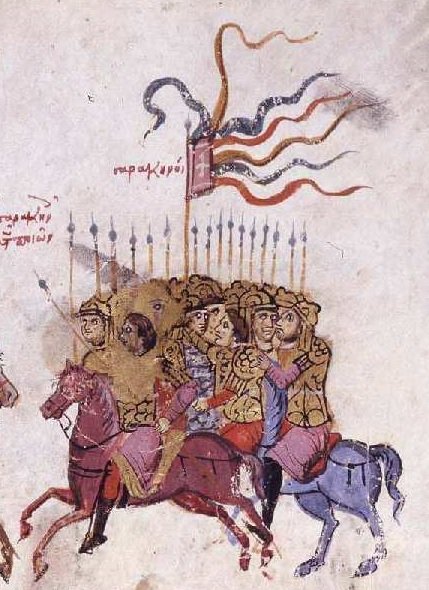
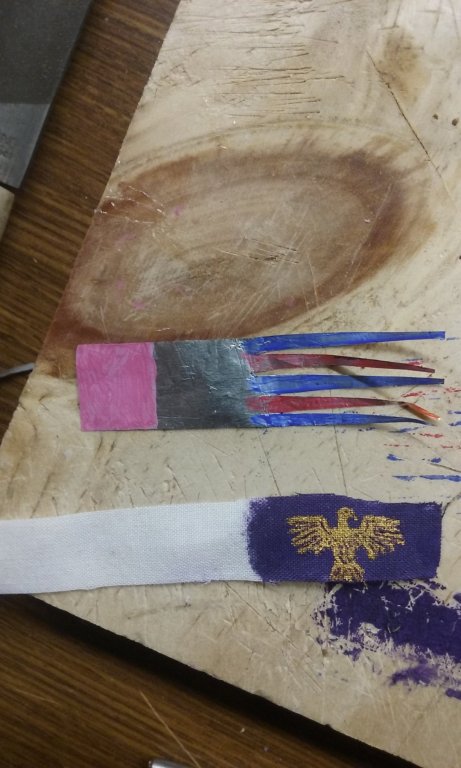
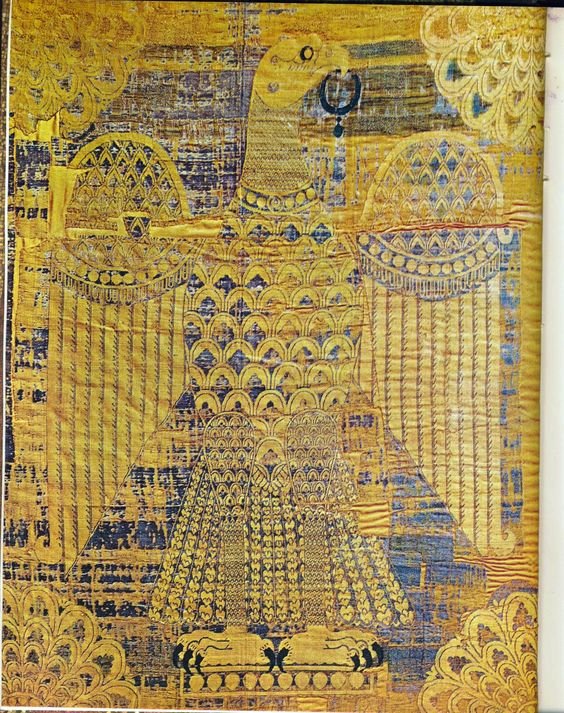
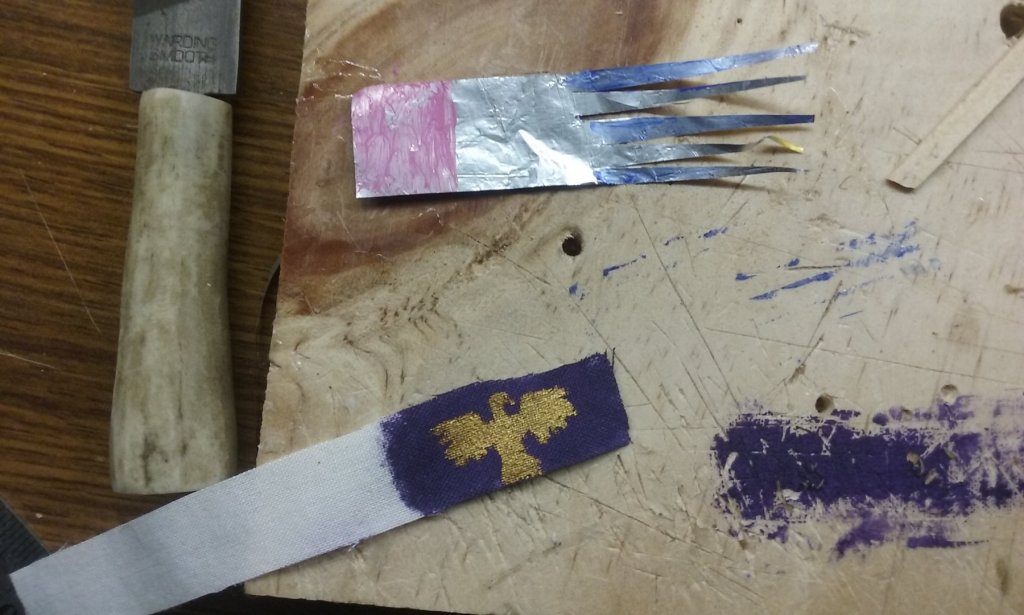
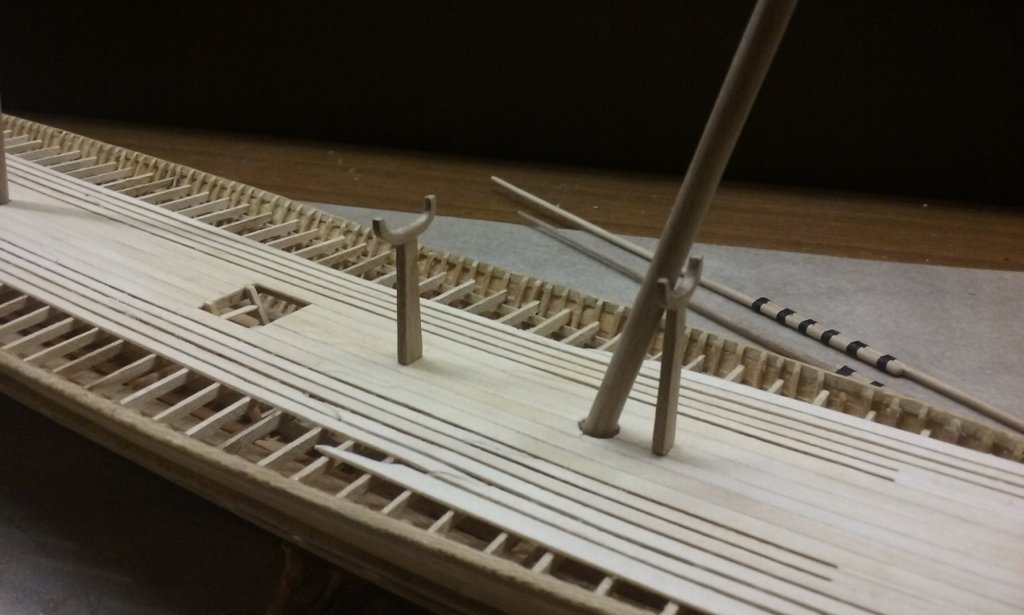

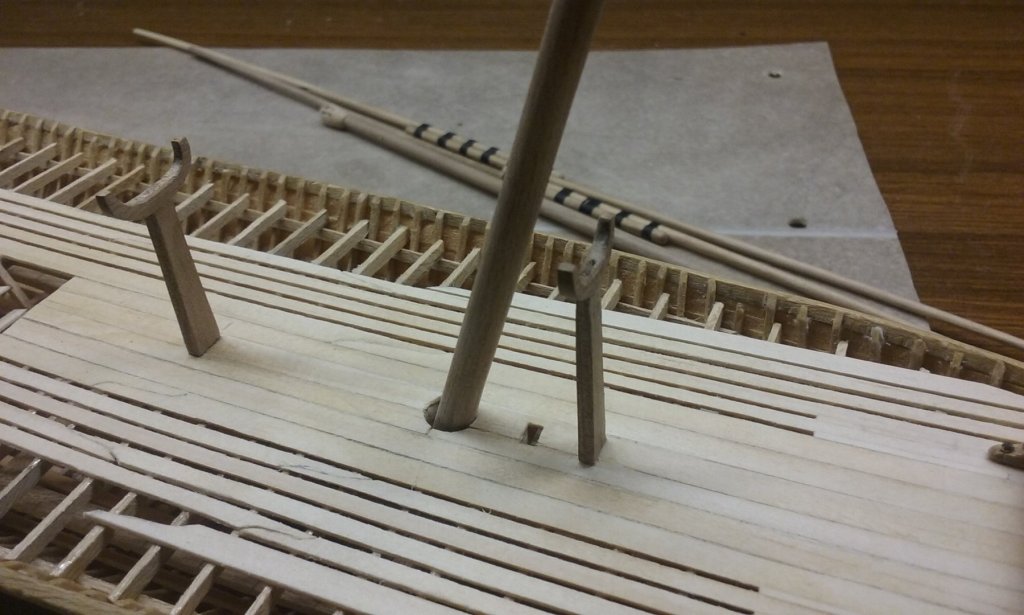
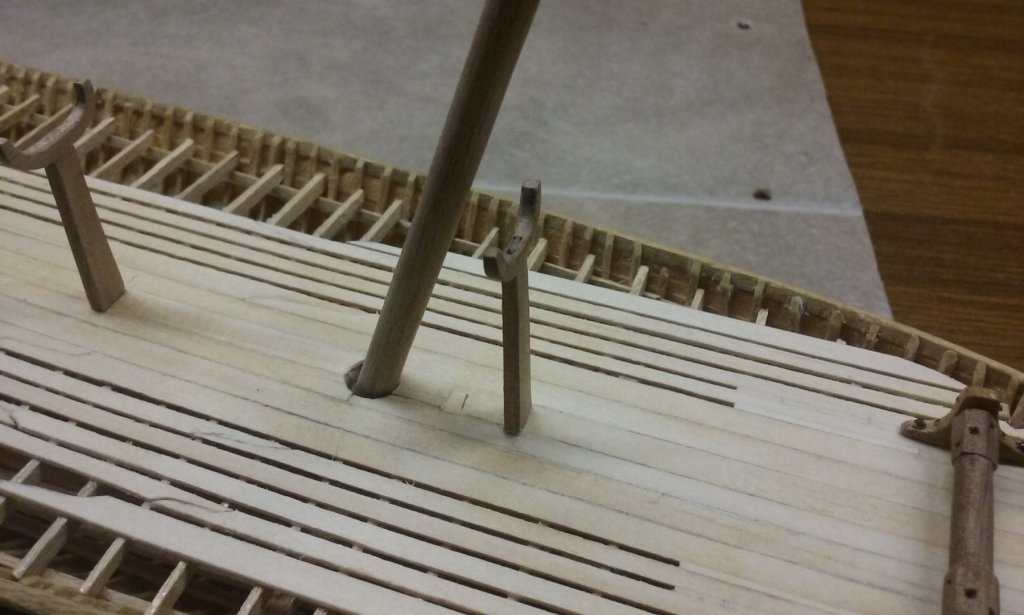

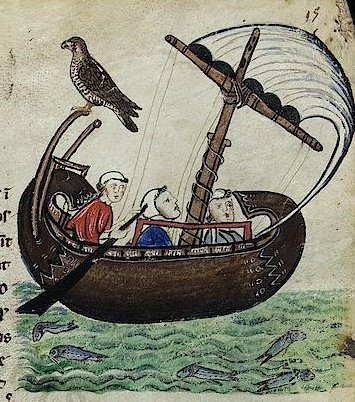
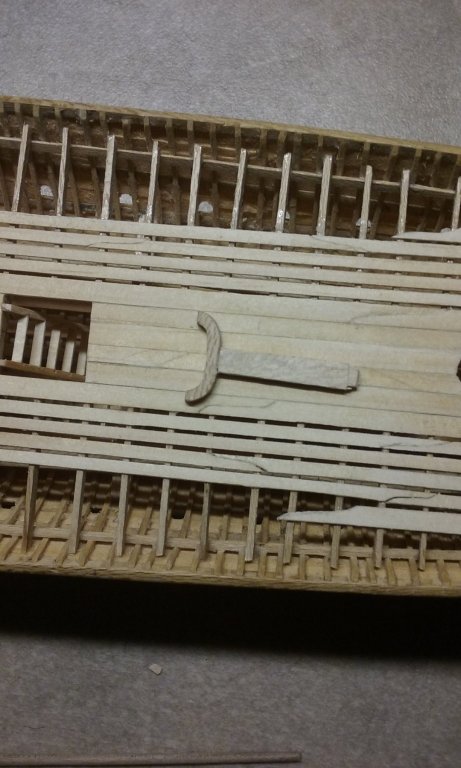
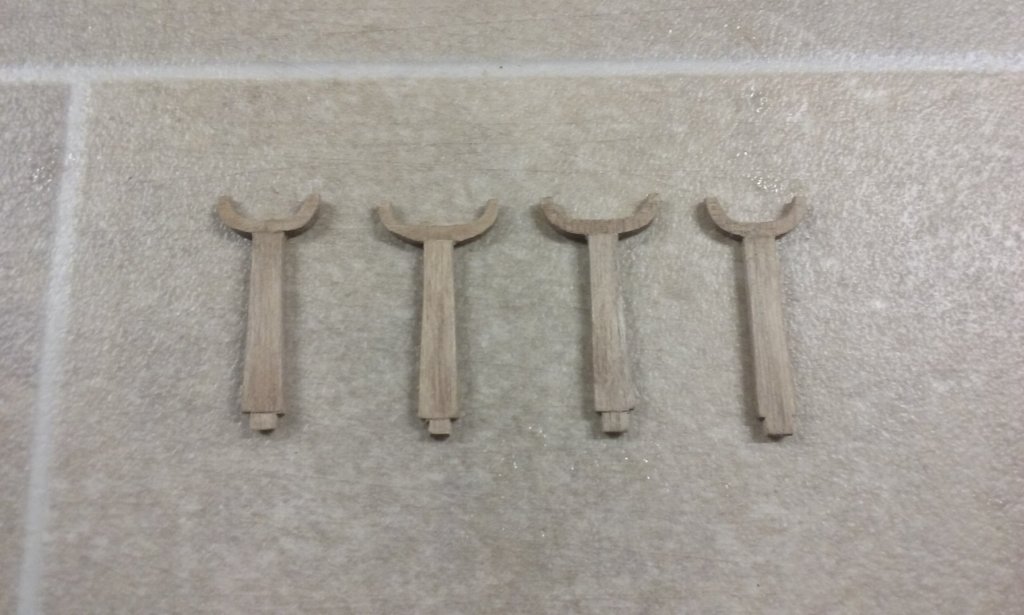
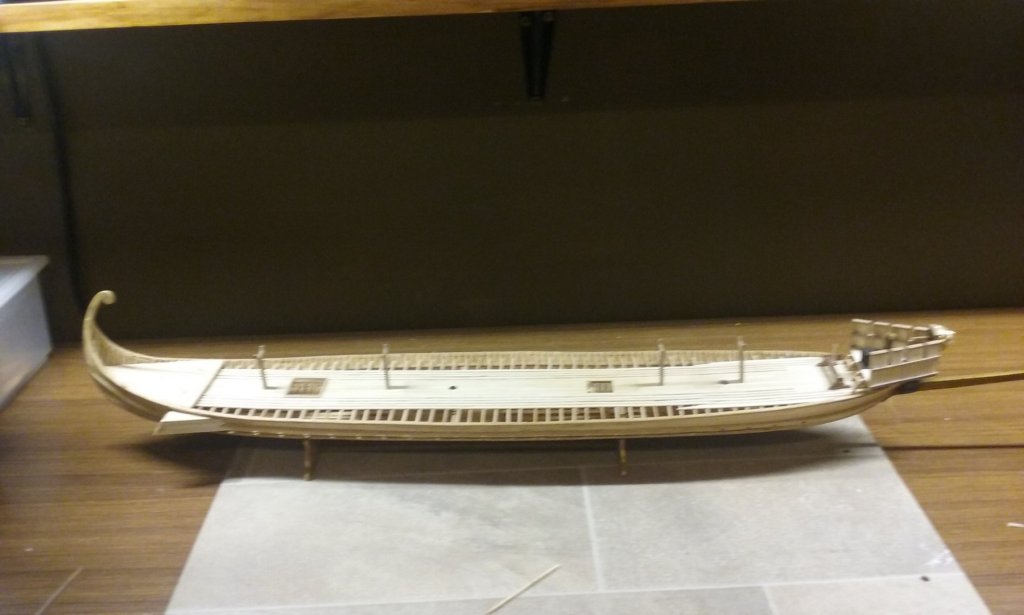
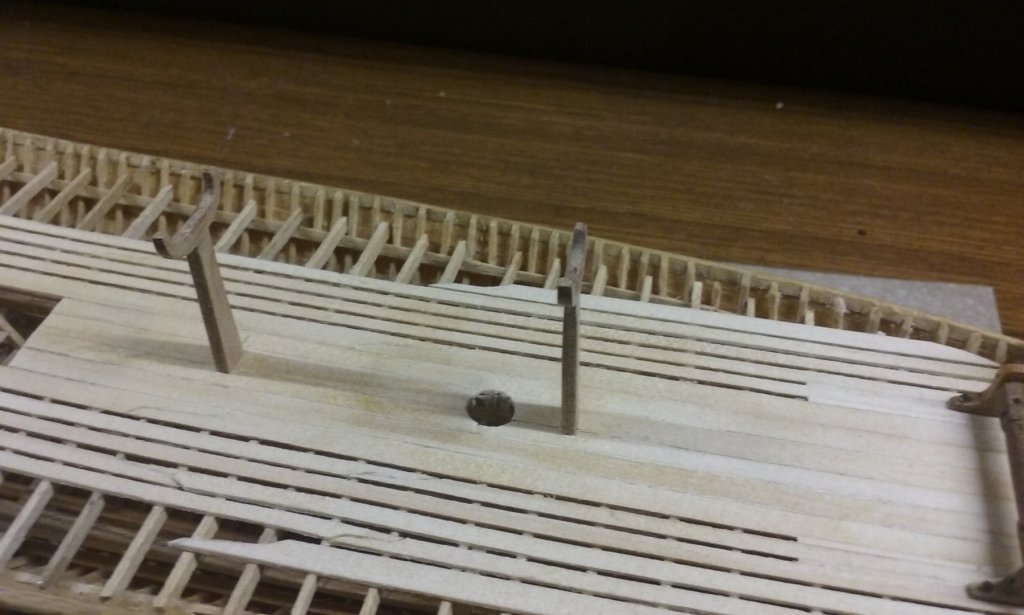

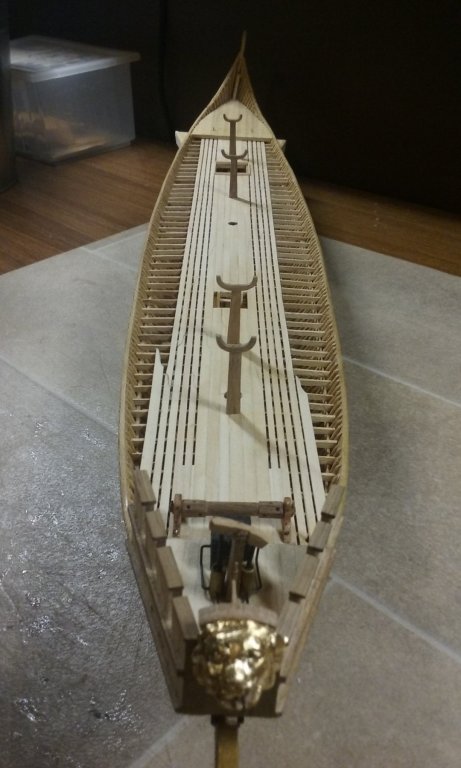
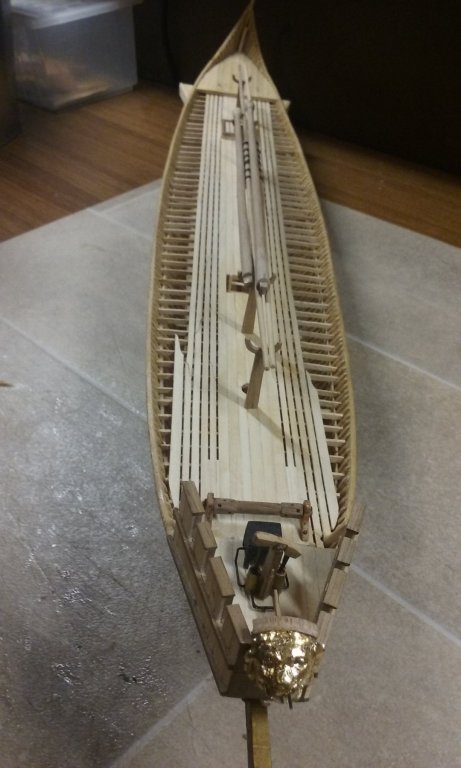
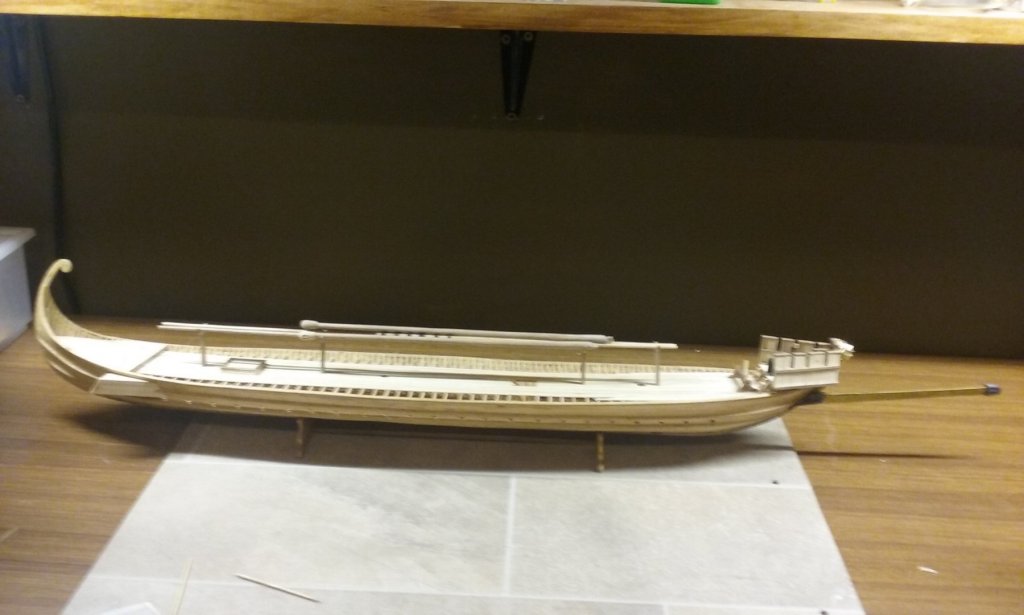
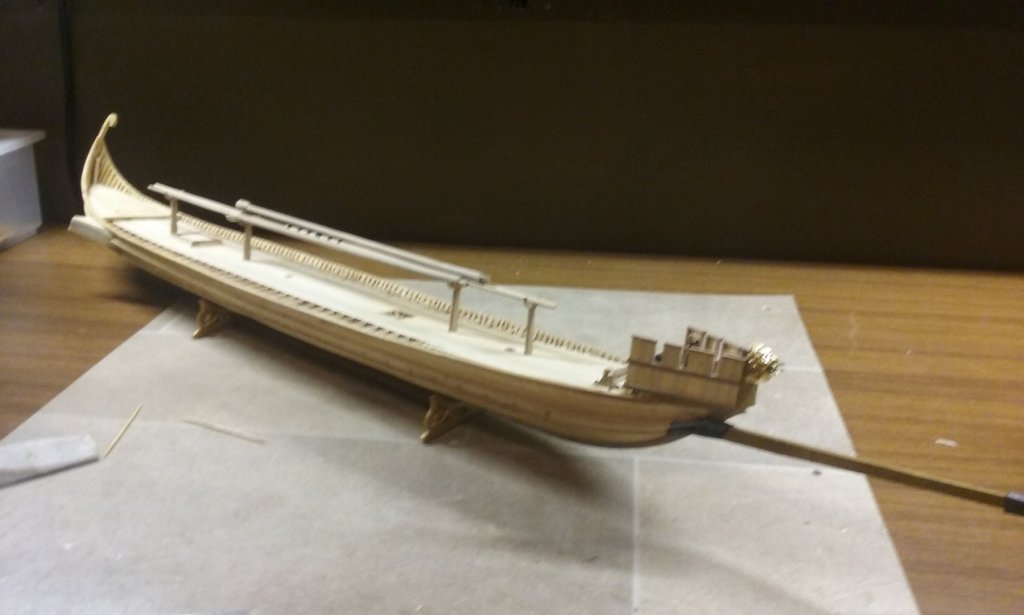
AnnalsofGenoa.thumb.jpg.f4630df2ef2f9f68407856e9a47c2130.jpg)

